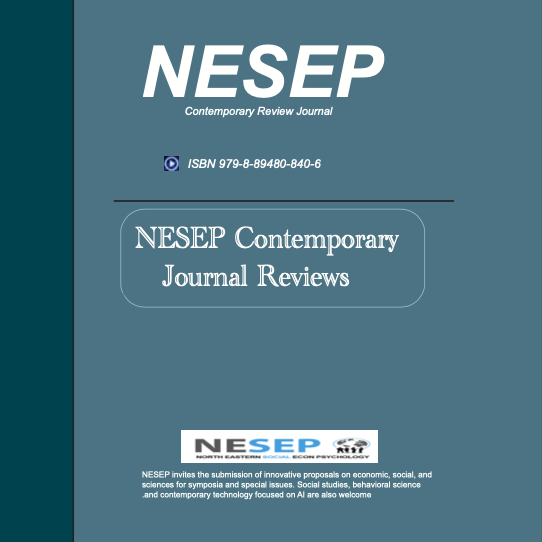Accepted Articles
We congratulate you on acceptance of your manuscript.

Annual Expo by the Journal of Young Explorers Meta and NESEP
- Fundamental or applied research
- Interdisciplinary research
- Judging on a rolling basis
- A work-in-progress research
- Completed research
- Unlimited topics and ideas
- ISBN 979-8-89480-840-6
- NESEP/NY-CSEF event at Harvard Club in NYC
Art Therapy and Neurodiversity: Therapeutic Outcomes and Societal Perceptions of Creativity in Individuals with Intellectual and Developmental Disabilities
Abstract: Our study examines the social impact of art therapy on neurodivergent subjects. For individuals who have intellectual and developmental disabilities (IDD), such as autism or Down syndrome, art therapy provides striking advantages correlated to traditional therapeutic models. Art therapy carries vast mediums of nonverbal communication, which, in turn, is better suited for patients who have a difficult time speaking or language development than the typical talk therapy. When put together with conventional therapy, art therapy can also promote emotional regulation. Extracting information from neuroscientific case studies and qualitative assessments, our study reveals that IDD patients improved neuroplasticity and their mental health.
The study also confronts habitual misconceptions about the creative abilities and mindset of individuals with IDD. Patients with IDD artwork are frequently overlooked as “outsider art” or art brut due to its unconventional subject matter. Still, such criticism seems to prolong biases against IDD. After reviewing historical views of autism and outdated definitions of neurotypicality, the study advocates for a fresh evaluation of art therapy as a medium for therapeutic tools. There are two advantages when it comes to Art Therapy. For starters, it operates as a beneficial form of treatment while also promoting the value and depth of neurodiversity in society as a whole. Lastly, our study pushes for more inclusive practices and strategies in therapeutic settings while also emphasizing the need for cultural efforts to protect the rights and privileges of IDD patients.
Reference
[1] D. Gussak, Art therapy with prison inmates: A pilot study, The Arts in Psychotherapy, vol. 31, no. 4, pp. 245–259, 2004.
[2] C. Malchiodi, The Art Therapy Sourcebook, 2nd ed. New York, NY: McGraw-Hill, 2006.
[3] J. Lusebrink, “Visual images and brain: A cognitive approach to art therapy,” Art Therapy, vol. 21, no. 3, pp. 96–103, 2004.
[4] D. H. Clements-Cortés and S. M. Bartel, “Music and art therapy with persons with dementia,” Canadian Music Educator, vol. 56, no. 3, pp. 25–32, 2015.
[5] M. Slayton, S. D'Archer, and J. Kaplan, “Outcome studies on the efficacy of art therapy: A review of findings,” Art Therapy, vol. 27, no. 3, pp. 108–118, 2010.
[6] T. Craig, S. Baron-Cohen, and F. Scott, “Creativity and autism: An investigation of subgroups in children with autism spectrum disorder,” Journal of Autism and Developmental Disorders, vol. 30, no. 2, pp. 113–122, 2000.
[7] R. McKenzie, “A different way to think about creativity: Re-examining the work of artists with autism,” Studies in Art Education, vol. 55, no. 2, pp. 127–143, 2014.
[8] I. Roth, “Autism, creativity and aesthetics,” Journal of Consciousness Studies, vol. 15, no. 4, pp. 5–15, 2008.
[9] M. Winner, E. Brownell, and S. Hetland, “Art smart: Lessons learned from the study of art in schools,” Education Next, vol. 3, no. 3, pp. 27–33, 2003.
[10] G. Dickie, Art and the Aesthetic: An Institutional Analysis, Ithaca, NY: Cornell University Press, 1974.
[11] A. C. Danto, The Transfiguration of the Commonplace: A Philosophy of Art, Cambridge, MA: Harvard University Press, 1981.
[12] J. Dewey, Art as Experience, New York, NY: Minton, Balch & Company, 1934.
[13] D. Henley, Exceptional Children, Exceptional Art, Worcester, MA: Davis Publications, 1992.
[14] S. Kalmanowitz and B. Potash, “Ethical considerations in art therapy research with vulnerable populations,” The Arts in Psychotherapy, vol. 37, no. 1, pp. 1–5, 2010.
[15] C. Schweizer, “Art as a means of communication in children with autism,” Clinical Child Psychology and Psychiatry, vol. 6, no. 3, pp. 439–453, 2001.